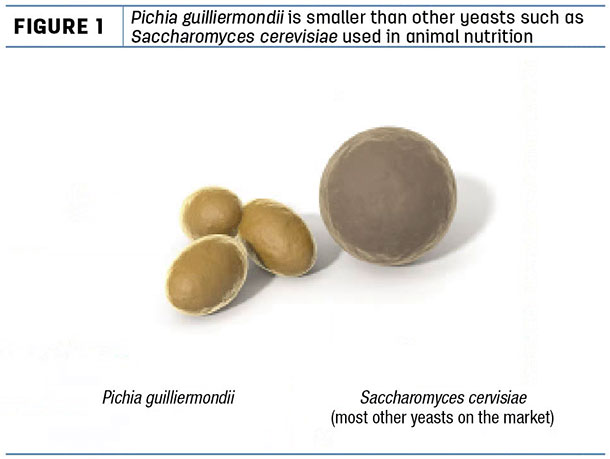Weather, transporting/moving, calving, working/processing, change in social dynamics and other events all cause stress.
Prolonged or compounded stress events can lead to detrimental effects such as potential loss of body condition and possible reproductive repercussions, lower gains in stockers and feedlot cattle, and diminished milk production, which impacts calf weaning weight.
Stress can cause immunosuppression and can have a serious impact on compromising gut health and rumen function, opening the door for physiological and health challenges.
When an animal experiences stress, regardless of type, the body’s physiology and metabolic processes react the same. The number of times an animal is stressed and the severity of stress determines the extent of the negative impact on performance.
Extensive work has been conducted on heat stress because of the prolonged exposure time and economic consequences. A significant number of producers overlook heat stress because an animal’s behavior is often viewed as “normal,” such as seeking shade or standing in ponds when, in essence, that is a sign the animal’s physiological and metabolic systems are under assault.
Heat stress is thought to impact gut health by reducing blood flow, which limits cellular gut activity. The result may lower the gut’s ability to maintain barrier functions, such as mucous secretion and intracellular “tight junctions.” This barrier function is part of the cow’s defense system and is designed to prevent pathogens and other gut toxins from entering the circulatory system.
Chronic heat stress can have a substantial impact on normal rumen function, especially in confined cattle fed high-concentrate diets. Declines in rumen pH due to disruption in dietary energy intake predisposes cattle to acidosis. And, obviously, any time stress occurs, the immune system is challenged. The more stress the animal is under, the more immunity is compromised.
Nutrition is key
Nutritional management plays a fundamental role in coping strategies for any stress event. Understanding the nutritional hierarchy (prioritization of nutrients needed by the animal) is the first step in utilizing nutrition as a proactive strategy to lessen the negative impact of stress.
Within the nutritional hierarchy, the animal will shift nutrient utilization naturally to alleviate the negative impacts of stress. As nutrients are diverted to the immediate need of helping the animal cope with stress, nutrient stores can become depleted, limiting production (i.e., animal growth or reproduction).
The goal for cattle producers is to determine a proactive supplementation strategy complementing the animal’s diet with targeted nutrients that can be utilized or stored in the animal’s body. This enables the animal’s physiology to respond quickly, helping minimize any negative consequences of stress and enhancing the animal’s overall comfort. If the animal is comfortable, nutrient allocation will shift down the nutritional hierarchy, moving performance in a favorable direction.
In addition to supplying dietary nutritional needs, good stewardship practices are critical to ensure cattle comfort. Access to ample fresh, clean water, insect/parasite control, pasture or pen conditions and shelter are some of the areas that need to be evaluated to combat stress and, in particular, heat stress.
Cattle producers should also look beyond these foundation practices to advances in livestock nutrition technology. For example, application of novel ingredients, including feed additives such as yeast, botanicals and extracts, have been shown to have a beneficial effect in helping cattle cope with heat stress, favorably impacting cow comfort.
For instance, research studies have shown certain yeasts can influence the rumen microbial population by shifting nutrient digestion and absorption. Pichia guilliermondii is a unique, whole-cell, inactivated yeast (Figure 1) that has been shown to adhere to gut pathogens and modulate the immune system, helping the animal fortify its defenses against health challenges that can occur during any stress event.

Pichia guilliermondii is smaller than Saccharomyces cerevisiae, a common yeast used in animal diets, with a resulting four times greater surface area per pound, enabling a greater impact within the digestive system.
Botanicals and extracts have also demonstrated value in cattle diets during stress. Research evidence shows some essential oils have rumen effects similar to those observed with ionophores, which could be especially beneficial for confined cattle.
Others appear to have the ability to help dissipate heat by increasing vasodilation and minimizing the rise in body heat that can occur with heat stress.
There isn’t one nutritional additive that can totally negate the negative consequences of stress. Nutritional additives vary in their effect and extent of effect on the physiology of the animal, from rumen function to immune support and vasodilation. Each additive has varying effects, and some may impart better results than others.
Nevertheless, nutritional additives worth inclusion in diets will continue to be supported by research studies that validate their return on investment. Producers are encouraged to consult with a reputable nutritionist or feed company to find the right combination of additives to provide proper nutritional support during stressful events. ![]()
PHOTO: Cattle around the water. Photo by Lynn Jaynes.

-
Chris Hagedorn
- Ruminant Product Manager, Animal Nutrition
- Archer Daniels Midland Company
- Email Chris Hagedorn








